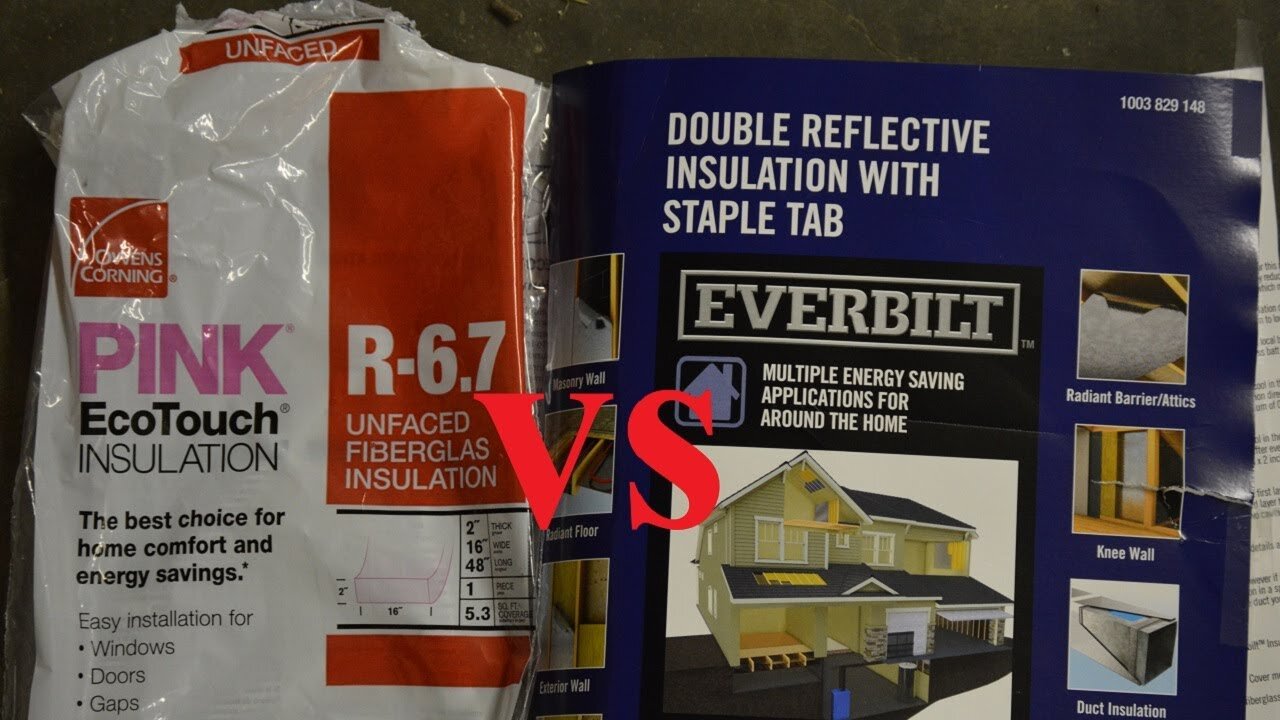Premium Only Content

Insulation Science w/ R Value Explained ~ You Can't Cheat Heat Transfer
While looking at my options for insulating the metal frame of my shop I did a quick experiment with some comparative analyses to discover/verify that R-Values are important and there's no cheating science.
The R Value of insulation is a rating the measures the resistance of heat transfer through that material. Therefore the higher the R-Value the lower the heat transfer and the better the insulating effect. Typically the two biggest factors to determining R Values is the material used and its thickness.
It might be tempting to jump for a thinner, cheaper insulation that claims a high R-Value but it's likely only applicable to very specific circumstances that likely don't apply to you. So understanding the factors involved in determining an R Value is very helpful.
Since most bulk insulation applications are some type of blow in, spray on or fiberglass batt insulation, and since there only a small difference in R-Value per inch of material on these insulations that means the name of the game is primarily thickness of insulation.
The heat transferred into a metal shop building is primarily from convective heat transfer and radiant heat transfer to the exterior of the building which is then conducted through the structure to the interior of the building. On the interior of the building convection heat transfer and radiant heat transfer then transfer the heat into the air inside. Use of insulation blocks both but it's effectiveness is heavily dependent on the material and thickness of the insulation.
I try and provide quality videos, if you enjoyed please subscribe. If you're not willing to subscribe then please tell me why in the comments so I can do better in the future. @GarageScience
Be sure to follow me on FB: https://www.facebook.com/GarageScience/
And on Instagram: @garage_science
-
 8:01
8:01
MattMorseTV
9 hours ago $22.61 earnedVance has finally HAD ENOUGH.
39.9K84 -
 15:18
15:18
MetatronHistory
2 days agoThe REAL Origins of the SUMERIANS
3.72K1 -
 22:43
22:43
Nikko Ortiz
13 hours agoGhost Of Tabor Is Like Fent...
7.65K1 -
 17:44
17:44
The Pascal Show
13 hours ago $0.72 earnedNOW LAPD IS LYING?! TMZ Doubles Down On Source's "Celeste Rivas Was FROZEN" Claims
4.64K1 -
 18:05
18:05
GritsGG
14 hours agoThis Duo Lobby Got a Little Spicy! We Have Over 20,000 Wins Combined!
5.18K -
 LIVE
LIVE
Lofi Girl
3 years agolofi hip hop radio 📚 - beats to relax/study to
226 watching -
 37:08
37:08
MetatronGaming
2 days agoWarhammer Shadow of The Horned Rat DOS Version is FANTASTIC! 1995
13.9K1 -
 2:03:36
2:03:36
FreshandFit
12 hours agoAkaash Replies to FreshandFit w/ Girls
189K23 -
 1:07:49
1:07:49
Man in America
12 hours agoBANNED TECH: The Tesla Secrets Rockefeller Crushed to Keep You Sick w/ Linda Olsen
39.9K7 -
 4:40:43
4:40:43
Drew Hernandez
1 day agoCANDACE OWENS ASSASSINATION PLOT?
45.7K21